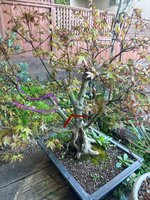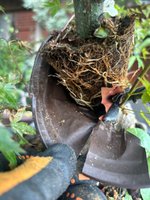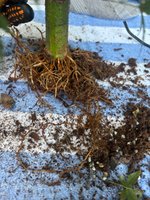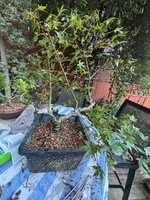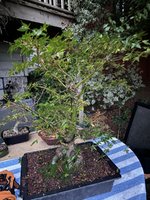Hermes33
Yamadori
I got this Japanese Maple last year and didn’t see the interior until this winter. It needs a lot of work and I could use any suggestions regarding where to airlayer (left side large branch/trunk has 2 limbs with movement I’d like to keep) or what all needs to be done. Red is air layer (or chop if necessary) and purple what to keep. There is a lot on top too that I’ve barely looked at. Any help greatly appreciated as I’ve never removed such a large volume before and am still beginning. The major moves are what I need help with then I can start deciding how to proceed regarding refinement once I see what falls out. Nice hollow though!




